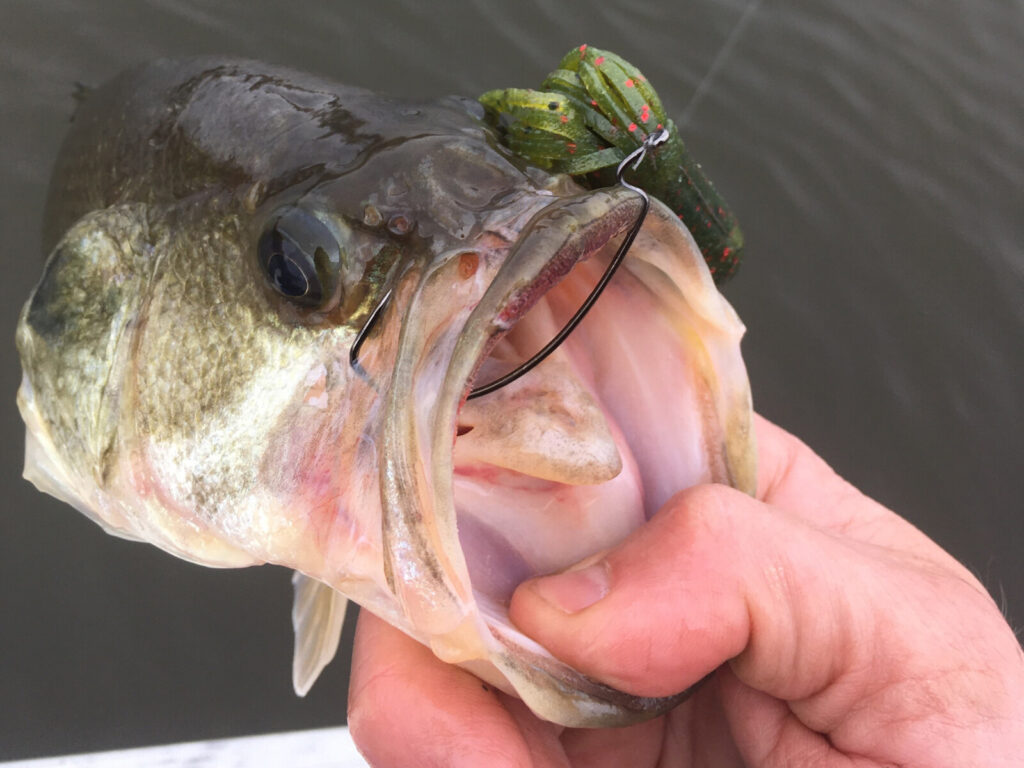Our Outdoors: Spring Simplicity
By Nick Simonson
A twisting garden worm on a gold Aberdeen hook under a split shot just a couple feet below a red-and-white bobber; that’s how most of us start fishing and certainly how it began for me.
The setup – and it feels like that term makes it seem all too complex, as if it were somehow part of an intricate angling method – caught perch and bluegills from the dock, swarms of bullheads from the grassy banks of the river and the occasional largemouth bass from the old farm pond throughout my childhood, and undoubtedly did the same for many others. Its success came from its simplicity and the readily-biting fish that would take to its most basic of presentations.

Over the years however, the clip-on bobber became a slipfloat or disappeared altogether. The garden worm became a nightcrawler or leech or minnow, or eventually no bait at all, but instead a rubber imitation or a scented synthetic of some sort. Then there were plastics, then blades, then crankbaits, then insert heads and rigs from Texas and Carolina. Spinners became harnesses and even simple bottom rigs had six or seven styles of weights to choose from. Suddenly a single-level tackle box became a flip-sider and that in turn became a shoulder-slung satchel filled with trays, boxes, bait containers and stowaway compartments that rivaled carry-on luggage or even a suitcase at times, depending on the length of the trip.
No angler ever wants to be without the hot bait that turns a slow day into a fast one, the right color that outfishes any other, the tool that turns the fish loose quicker or the electronics that get back to the spot on a spot. But like the grass and cattails that sustain pheasants or deer on the countryside, there’s only so much carrying capacity in those tackle boxes and bags for tubes and lizards and grubs and other plastics. As the fear of missing out takes hold of society through social media, a similar fear of not setting the hook settles in on the angling crowd – along with the trepidation of perhaps not being able to post that hero pic online with the five-pound largemouth in the air or the stringer full of walleyes – especially this time of year as plans and preparations for spring outings on the water hit the calendar. What will it take to not miss out on those opportunities? More tackle of course!
That means having three or four offerings of each lure in various colors, just in case the forage base changes, the water clarity shifts or we get a stretch without any sun. Longer tentacles, shorter curlytails, more wings, claws and appendages that can be trimmed, modified and adjusted to the fish’s predatory instincts and our psychological needs. Baits pile up in the corner of the den, garage or the fishing room (you do have a fishing room, don’t you?) at home because they don’t make the cut for the tackle box. Afterall, it is nice to know they’re there, just in case.
Then again, maybe not. Maybe those opportunities can be had with just the basics. For years I fished smallmouth bass, white bass and walleyes on my home flow with just a jig and a twister. Everything I needed fit inside of a 12-by-9-inch tray and produced countless days and evenings of incredibly memorable fishing. A few variations in size and color was all it took to connect. Even now, despite having multiple unopened packs of bass plastics at my disposal, I turn predominantly to two of them – a four-inch tube or a five-inch plastic stick – to catch both smallmouth and largemouth on nearly every water I fish. Afterall, I’m not angling in a tournament setting, and certainly don’t have a fishing room for all the overflow of plastics I want to try, lines of various pound-tests, and different hooks and jigs that have been picked up on a whim or salvaged from a clearance bin. However, the corner of my office is getting a little crowded by those items and others.
While the openwater season is a time to experiment, it’s also a time to catch fish. A couple of days each month are reserved for trying out a new technique, testing out highly recommended lure, but the bulk is just a mission to feel a tug on the line, set the hook and bring a fish to hand or maybe even the frying pan. When all of these options are available, it’s those tried-and-true methods, and sometimes the simplest ones, that accomplish that greater goal of catching fish. While it’s as important in the outdoors as it is in life to never stop learning, it’s just as important to find the joy in the simple things. Be they a regular ballhead jig and twister, a tube rigged on a worm hook, or that favorite firetiger crankbait, those simple, established patterns should always be at the ready…in our outdoors.
